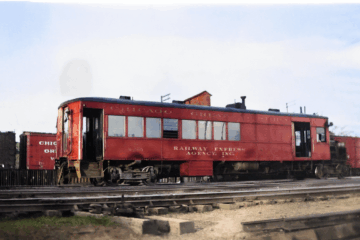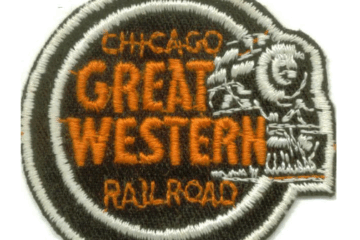We can ask ourselves and potentially argue about what the most popular topics in model railroading happen to be in 2025. I also know and based on my conversations with many model builders that in 2025 modelers are diving into a mix of traditional craftsmanship verses cutting-edge technology.
Some of the hottest topics include:
- Kitbashing & Scratchbuilding – Enthusiasts are refining techniques to create unique rolling stock and structures.
- Evolution of Layouts – Many are documenting how their layouts have changed over decades, showcasing improvements in scenery and operations.
- DCC & Electronics – Discussions around wiring, decoder selection, and automation are thriving.
- Prototype Modeling – There’s a strong focus on replicating real-world railroads with accurate details.
- Commemorative & Fantasy Models – Special edition models celebrating historical events and figures are gaining traction.
- Track Laying Techniques – Debates continue on whether to lay track before or after scenery.
- Growing Seafoam Trees – A niche but popular scenery technique for realistic vegetation.
Model railroading today is a fascinating blend of classic craftsmanship and modern innovation.
Enthusiasts are embracing both traditional techniques and advanced technology to create highly
detailed and immersive layouts. Here is a deeper dive into how these two worlds intersect:
Traditional Craftsmanship
- Hand-built Structures & Scenery – Many modelers still prefer scratchbuilding structures using wood, styrene, and plaster for a more authentic look.
- Weathering Techniques – Airbrushing, dry brushing, and pastel chalks are used to give locomotives and rolling stock a realistic aged appearance.
- Hand-laid Track – Some purists still hand-lay rails and ties for precision and realism, rather than using pre-made track sections.
- Custom Decals & Paint Jobs – Modelers create unique liveries and signage to match specific prototypes or freelance designs.
Cutting-Edge Technology
- Digital Command Control (DCC) – Allows independent control of multiple locomotives on the same track, enabling realistic operations.
- 3D Printing – Hobbyists are designing and printing custom locomotives, rolling stock, and structures, expanding creative possibilities.
- Augmented Reality (AR) & Virtual Reality (VR) – AR apps overlay information on real-world layouts, while VR allows immersive experiences.
- Automated Operations – AI-driven software like JMRI enables automated train schedules, signaling, and turnout control.
- Sound & Lighting Effects – Modern decoders produce realistic engine sounds, whistles, and synchronized lighting for an immersive experience.
Something I have been thinking about for a long time is building a IoT Layout. IoT otherwise is an acronym for “Internet of Things” (IoT). The Internet of Things (IoT) refers to a network of physical devices—such as sensors, appliances, vehicles, and industrial machines—that are embedded with software and connectivity, allowing them to collect and exchange data. These devices communicate with each other and with cloud-based systems to automate processes, improve efficiency, and enable real-time monitoring and control.
IoT-based model railroad layouts are becoming more popular as hobbyists integrate smart technology into their setups. These layouts use wireless sensors, microcontrollers, and cloud-based automation to enhance operations. Here are some key aspects:
So what is the vision of a IoT in Model Railroading?
- Remote Control & Monitoring – Using Raspberry Pi, Arduino, or ESP8266 modules, hobbyists can control turnouts, signals, and train movements via a smartphone or web interface.
- Automated Train Scheduling – AI-driven software can manage train movements based on real-time data, optimizing operations.
- Sensor-Based Detection – Infrared or RFID sensors track train positions and adjust speed or signals accordingly.
- Cloud Connectivity – Some layouts integrate cloud-based dashboards for monitoring and controlling trains remotely.
- Voice & Gesture Control – Advanced setups allow voice commands or gesture-based interactions to operate the layout.
- Live Video, Augmented Reality (AR) & Virtual Reality (VR) applications.
Examples of IoT-Based Layouts
- Arduino-Controlled Railroads – Many hobbyists use Arduino to automate train movements and turnout control.
- Raspberry Pi Automation – Some layouts use Raspberry Pi for web-based control and automation.
- Smart DC Layouts – IoT-enabled DC layouts allow for precise speed control and automated operations.
The idea of building a IoT layout falls in line with the strong focus on Prototype Modeling (aka Proto48) on replicating real-world railroads with accurate details and operations. Years ago big clubs operated trains using a fast clock that everyone could see on the wall and the use of train orders.
Model railroading is all about visuals, envisioning, building, running and of course socializing with our counterparts in the hobby. Thus, when I get tired of working in the model shop or on parts of the layout, I want to get off my feet and transition into being an “arm chair” model railroader. In doing so that is where I come up with new ideas. In my case it might be a big pipe dream.
So what if one were to implement and build out a layout based on a Class 1 railroad company such as the Chicago Great Western Railroad? The key feature of which is to integrate and enable IoT so that others might enjoy running trains remotely on my pike. Just like the CSX System is a network controlled from their Jacksonville operations center, the operation center could be setup inside the old CGW Tower in Oelwein with all the screens and communications to run a railroad like a real prototype. Or, an entire club could have an enjoyable night of operation on the remote layout and communicate with AI Avatar engineers and conductors to dispatch trains and watch them run to execute train orders. Would that be fun or what? Okay, I may have just gone off the deep end with this dream or maybe not, we all need more recreation in this day and age, do we not?
Most of the above topics are being widely discussed on the Internet in the Model Railroad communities, social media, forums and blogs. This blog article was researched and develop based on my own observations, reading and discussions with customers. Therefore the following credits go to these sites where you can also read more in depth no matter what scale you model. But just like immersing oneself in model building, the 3D Printing, Electronics and Smart Layouts can be hobbies onto themselves. I urge you to check these resources below if IoT is of interest to you.
- https://www.trains.com/mrr/magazine/issues/may-2025/
- https://midwestmodelrr.com/blog/tracks-of-innovation-the-modern-marvels-of-21st-century-model-railroading/
- https://forum.mrhmag.com/post/building-the-iot-railroad-a-smart-dc-layout-13392467
- https://www.esociety-conf.org/wp-content/uploads/2021/03/01_202101L015.pdf
- https://forum.trains.com/c/model-railroader/8
- https://penguintutor.com/projects/model-railway
- https://www.jmri.org/



